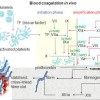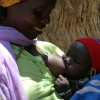Acquired immunodeficiency syndrome (AIDS) in hemophiliacs
Abstract
From mid-1977 to mid-1983 the Centers for Disease Control (CDC) has received reports of more than 2,100 cases of acquired immunodeficiency syndrome (AIDS). These cases had either biopsy-confirmed Kaposi’s sarcoma or a biopsy or culture confirmed life-threatening opportunistic infection, without an identifiable cause of immunosuppression.… Read more

